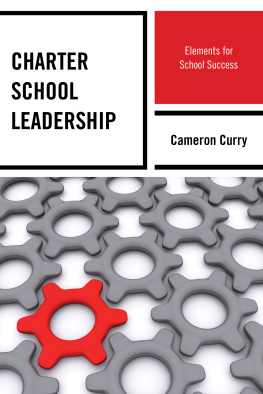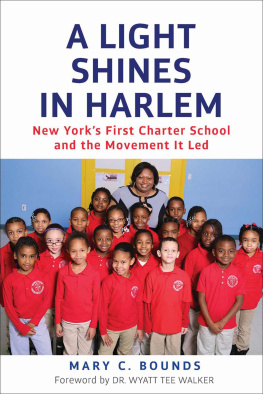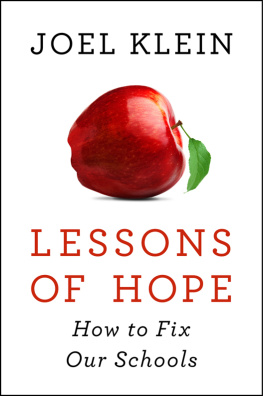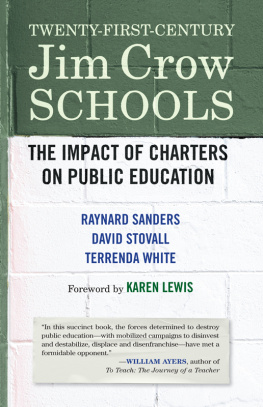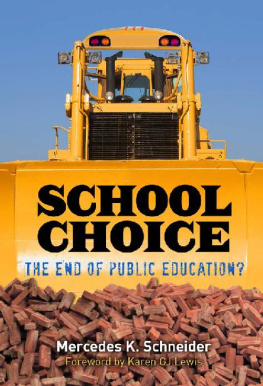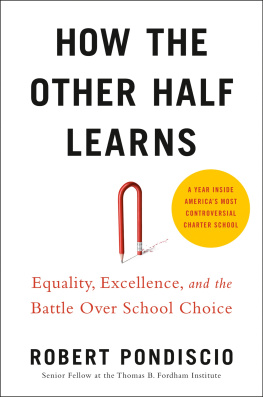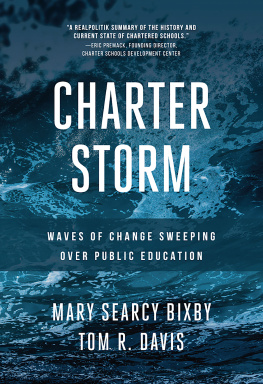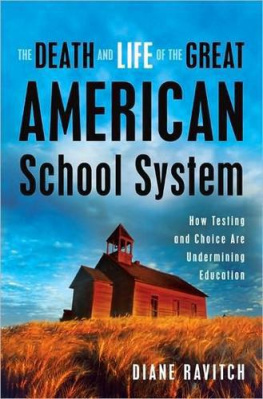Hope Against Hope
Copyright 2013 by Sarah Carr
All rights reserved. You may not copy, distribute, transmit, reproduce, or otherwise make available this publication (or any part of it) in any form, or by any means (including without limitation electronic, digital, optical, mechanical, photocopying, printing, recording, or otherwise), without the prior written permission of the publisher. Any person who does any unauthorized act in relation to this publication may be liable to criminal prosecution and civil claims for damages.
For information address Bloomsbury Press, 175 Fifth Avenue, New York, New York 10010
Published by Bloomsbury Press, New York
LIBRARY OF CONGRESS CATALOGING-IN-PUBLICATION DATA
Carr, Sarah.
Hope against hope : three schools, one city, and the struggle to educate Americas children / Sarah Carr.1st U.S. ed. p. cm.
Includes bibliographical references and index.
ISBN 978-1-60819-495-7 (e-book)
1. Children with social disabilitiesEducationLouisianaNew OrleansCase studies. 2. Charter schoolsLouisianaNew OrleansCase studies.
3. Educational changeLouisianaNew OrleansCase studies. I. Title.
LC4093.N49.C37 2013
371.930976335dc23
2012027728
First U.S. Edition 2013
This electronic edition published in February 2013
www.bloomsburypress.com
For my parents,
Elliott and Susan Carr,
and for the many families whose grace made this possible
Contents
The Family
Dont be like me. Be a little better.
The Teacher
Teaching is a series of things you do in response to the data you get.
The Principal
We are going to get this thing called education right.
The Teacher
A broken window means a broken path to college.
The Family
We dont desire because we dont know what we are missing.
The Principal
Our efforts should be spent on creating a school thats worth fighting for.
The Teacher
I want to go to a normal school.
The Family
KIPP be trying to change us.
The Principal
I thought all the stories would be good stories.
The Teacher
This is the way, hey! We start the day, hey! We get the knowledge, hey! To go to college!
The Principal
You want to go to college, baby?
The Family
Money makes money.
The Principal
In every child I see my children.
The Teacher
Is it that our kids are able to see through some things their teachers blindly follow?
The Family
They say they love us already, but they dont really know us.
I have changed the first names of some children to protect their privacy, but no other facts. I witnessed more than half of the scenes. In order to re-create the others, I interviewed at least one person who was present at the time; whenever possible, I tried to interview multiple sources about the same scene or event.
The families and educators featured in the book have all shown remarkable courage in sharing their thoughts and experiences, particularly Mary Laurie, Aidan Kelly, Geraldlynn Stewart, and Raquel Dillon. They have each taught me important lessons not only about education but about the role of race, class, gender, and religion in twenty-first-century America.
I did not select the main characters or school sites to hold them forth as exemplars for critique or emulation. In none of their individual stories can be found a conclusive answer to the challenges facing our cities and their schools, or a tidy prescription for fixing them. I chose the principal, teacher, and family for their singular passion and contrasting backgrounds and convictions in the hope that, considered together, they might defy stereotypes and challenge the simplistic ideology of the day.
Their life stories and experiences in the schools did not always conform to the script I had subconsciously expected and planned, however. In that sense, they have already challenged me.
They met in the most neutral site that could be found: a New Orleans funeral home. There, just feet from caskets, urns, and rosaries, two competing visions for the future of Americas poor and dispossessed collided.
The issue at hand, a proposal to turn Joseph A. Craig Elementary School into a charter school, drew dozens of parents, children, teachers, and community leaders from the surrounding neighborhood called Treme. At first, the gathering in March 2010 seemed routine and parochial. Teachers came concerned about their jobs. Parents needed to know if Craig would stay open. Neighborhood residents wanted to ensure the schools name remained the same.
The conversation that night quickly devolved into a public battle between two African-American men who, on the surface, had much in common. Both were lifelong New Orleanians who grew up attending the citys public schools. Both stood over six feet tall. Both were community luminaries well-known for their devotion to educating the citys thousands of schoolchildren. And both Jerome Smith and Tony Recasner brought the best of intentions to the meeting at the funeral home that night.
Tony Recasner had the look and bearing of a professor: tall, thin, and bespectacled, with a neatly trimmed mustache and a soft, friendly voice. As children squirmed and Craigs existing teachers looked on skeptically, he described the proposal to turn Craig into a charter school. Craig had been failing Tremes children for decades. It failed to meet minimum standards for academic performance when the Orleans Parish School Board ran it before Hurricane Katrina. And state intervention after the flood did little to change that pattern. FirstLine, the organization Recasner helped create, posted superior results at the two charter schools it already ran in New Orleans.
Recasner, a trained school psychologist, cofounded the citys first charter school in 1998; he hoped the increased flexibility afforded charters would allow him to better serve children. Some criticized him for leaving only one foot in the black community as he allied himself with many white business and political leaders in his efforts to change the education system. Now, four and a half years after Katrina, the movement Recasner had helped start prevailed: A coalition of local power brokers, backed by several of the nations wealthiest foundations and top politicians, moved quickly to charter the citys schools.
At heart, many of the reformers were technocrats. They believed unelected experts, not politicians, should run the schools, and that decisions should be based on science and data, not relationships or tradition. But some of their language was anything but technocratic. They considered their cause the civil rights movement of the twenty-first century and often described themselves as part of the Movement.
The meeting about Craigs future took place in the Charbonnet-Labat-Glapion Funeral Home, one of the countrys oldest black-run parlors. Throughout the 1960s, civil rights leaders met secretly in African-American funeral homes to coordinate their efforts and find common cause. But rapprochement proved elusive that March night a half century later.
With ample knowledge of how quickly New Orleans public gatherings can turn into raucous shouting matches, Recasner tried to keep this one calm and focused on the issues at hand as he fielded questions about class size, teacher hiring, and whether a new Craig would accept children with severe emotional and academic needs. He kept his responses polite but brief. When one woman delivered a lengthy tirade about the quality of special education programs for disabled children at some charter schools, Recasner responded: At the schools we operate, that would not be your experience.
Next page

